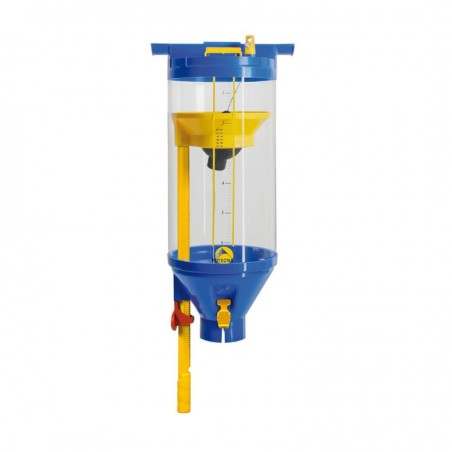Diagnosing the presence of the highly prevalent and economically important pig parasite Ascaris suum on fattening farms has so far been challenging. Currently, only the number of livers affected at slaughter is routinely used to measure parasite exposure. However, recently, a new serological test was developed based on the detection of antibodies to the A. suum haemoglobin molecule. The test showed to be highly sensitive for the detection of exposure to A. suum in fattening pigs. In this study we first compared the performance of A. suum serology versus the percentage of affected livers at slaughter, subsequently we investigated potential associations between A. suum infection levels and exposure to important lung pathogens and finally we identified correlations between serological data and technical performance parameters (TPIs) from 20 Belgian and 20 German pig fattening farms.
In both Belgian and German farms, a significant relationship was detected between elevated average Ascaris serology and percentages of affected livers (ρ = 0.63 and ρ = 0.75, respectively). On the Belgian farms, both Ascaris serology and the percentage of affected livers were negatively correlated with average daily gain (ADG) (ρ = −0.69 and ρ = −0.56, respectively). Using the German dataset, only a borderline negative association was detected between the percentage of affected livers and the ADG (ρ = −0.44, P = 0.053). In contrast, only in the German farms, correlations between the percentage of affected lungs at slaughter and elevated presence of A. suum and several other airway pathogens were detected.

To conclude, this study indicates that serological screening for A. suum on fattening farms is an attractive new diagnostic tool that can be used to indicate the presence of roundworm infection by measuring infection intensity. Furthermore the results of this study also add weight to the evidence that both roundworm infections as well as herd exposure to airway pathogens have a significant impact on farm productivity and hence, that all these factors should to be taken into account when assessing pig health and farm productivity.
Johnny Vlaminck, Simon Düsseldorf, Lourens Heres, Peter Geldhof. Serological examination of fattening pigs reveals associations between Ascaris suum, lung pathogens and technical performance parameters. Veterinary Parasitology. Volume 210, Issues 3–4, 15 June 2015, Pages 151–158. doi:10.1016/j.vetpar.2015.04.012







